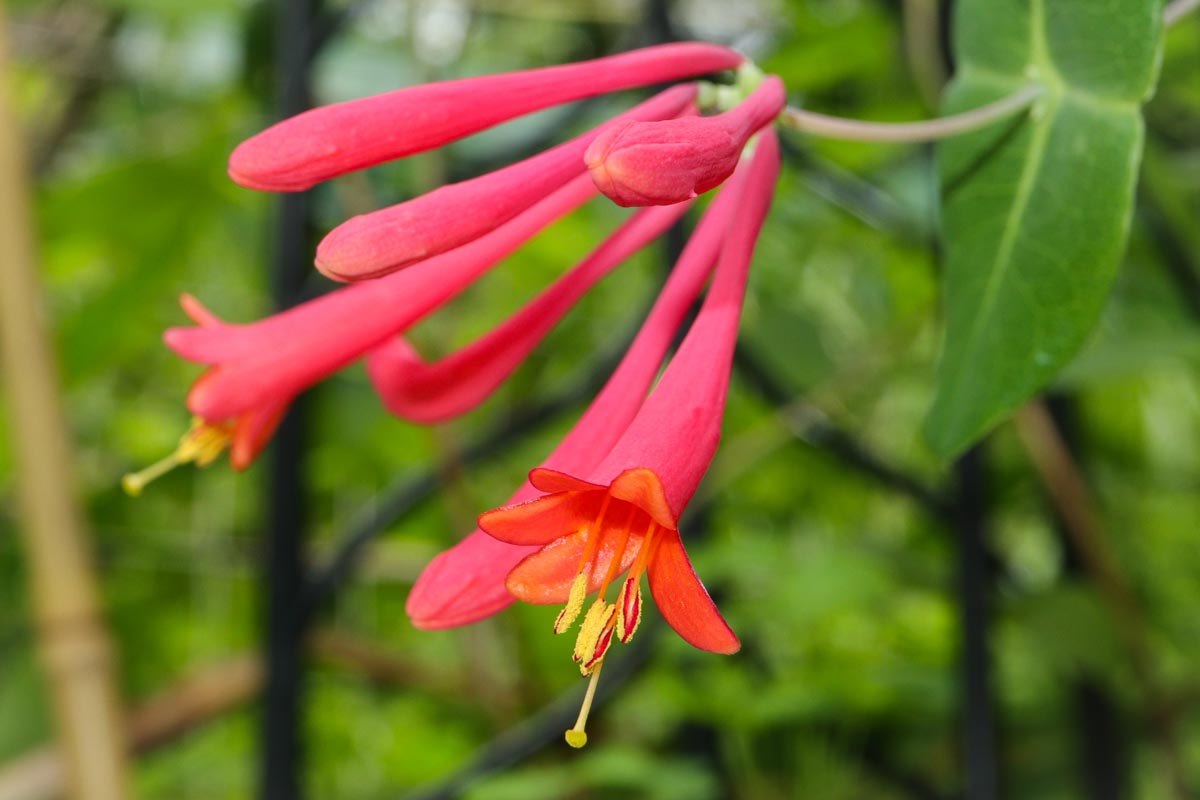Growing up, before knowing how they were taking over the country, I loved honeysuckles. As a child, I enjoyed sipping the flowers, a tiny taste of honeyed sweetness. In middle and high school they always flowered around the time I was taking my final exams, and after hours of study I would step out into the night and walk in the cool air, inhaling the sweet scent wafting through the late spring night.
These positive associations have been replaced by the rude shock of seeing the damage they have done to many native habitats where I’ve lived. I’ve spent much of the past decade removing invasive honeysuckles from my property. Bush honeysuckles grow both in open areas and deep in the forest. One of these, the Amur honeysuckle, was introduced by the New York Botanical Garden over a century ago. At the time it was seen as a good wildlife cover plant, and also to help control soil erosion. I’ve been visiting the NYBG since childhood, and enjoyed a class on tropical ecology taught by Dr. Prance while he was then vice president, between my undergraduate and graduate studies. In general I have very positive attitudes toward it. But I do wish they hadn’t encouraged this plant.
Unfortunately, they have long since escaped cultivation and with the help of birds seeded themselves into much of the east and central US, including throughout my woods and fields. Though less common, I also have winter honeysuckle dotting the woods. I can see the attraction of their winter flowers but have removed them since they edge out native species.
Even more problematic for me are Japanese honeysuckle vines. They are very aggressive, spreading rapidly through the forest, growing up even the smallest of saplings. Many trees in the forest are scarred by their aggressive growth, with deep ridges distorting the trunks. Some of the trees have died before they can reach maturity. I have pulled out thousands of them, but more always seem to creep up, racing across the earth attaching to anything remotely vertical.
With this background, it was with some trepidation I chose to deliberately plant a native coral honeysuckle. I chose Lonicera ‘Major Wheeler’, discovered in the late 1980s. Pat and Charles Wheeler, avid Raleigh gardeners, were exploring Emerald Isle in coastal North Carolina when she saw this natural variety growing on a construction site. It was propagated by local nurseries and has since become a very popular plant for fans of hummingbirds and other pollinators. It is considered by many to be the best red flowered honeysuckle.
So far it has remained very well behaved, remaining on the trellis I trained it on. I am not eager to encourage its spread but am okay if it covers a nearby fence. I will remain vigilant for any invasive inclinations, but luckily it has shown no tendency to take over the yard. Over time, maybe it will restore my faith in the positive qualities of honeysuckle. Once again, I can revel in the sweet taste and wild perfume of these familiar yet exotic flowers.
